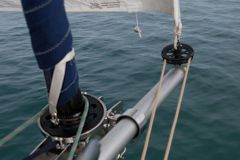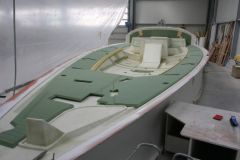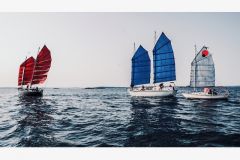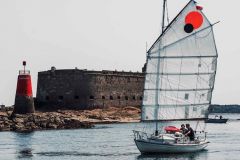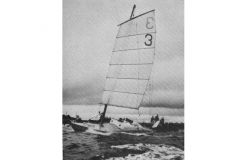The choice of carbon chainplates
Now that he's found the new Duracell mast, Matt can tackle the necessary modifications to his 60-foot sailboat to accommodate the new spar. Initially, Duracell had stainless steel chainplates that Matt dismantled. For the new rig, he chose a new material, carbon, on the advice of an architect, Evan, who sized the part for him. This choice was made, despite the high price, for reasons of weight savings, but also for durability over time, as carbon allows a higher safety coefficient with a reasonable weight. It is also less sensitive to fatigue and corrosion.
Ensure the link with the existing structure
Evan also explains the choice to remove the foam from the sandwich on the wall and go back to a monolithic planking, which was achieved in the last episode. Not knowing the state of the junction between the foam and the fiberglass, it is safer to start from a recent lamination. The chainplate will be completely reworked on the inner side of the wall, in order to avoid overthicknesses on the outside of the hull.
Delicate operation
To build his chainplates, Matt uses 36 fabrics of unidirectional carbon. This gives him a safety coefficient of 20. For a good cohesion of the fabrics and to avoid angles, a wedge is machined in high density foam, milled to accommodate the top tube of the chainplate. This will hold the bottom of the shroud and the round bar used to secure the turnbuckle. Matt perfected the method over time and after impregnating the fabrics and layering 6 of them, he positioned them on the tube. He adds the rip-off fabrics and positions them in place on the wall, letting them catalyze under vacuum. They take the shape of the wall. Matt can then add the rest of the carbon fabrics in the workshop.





